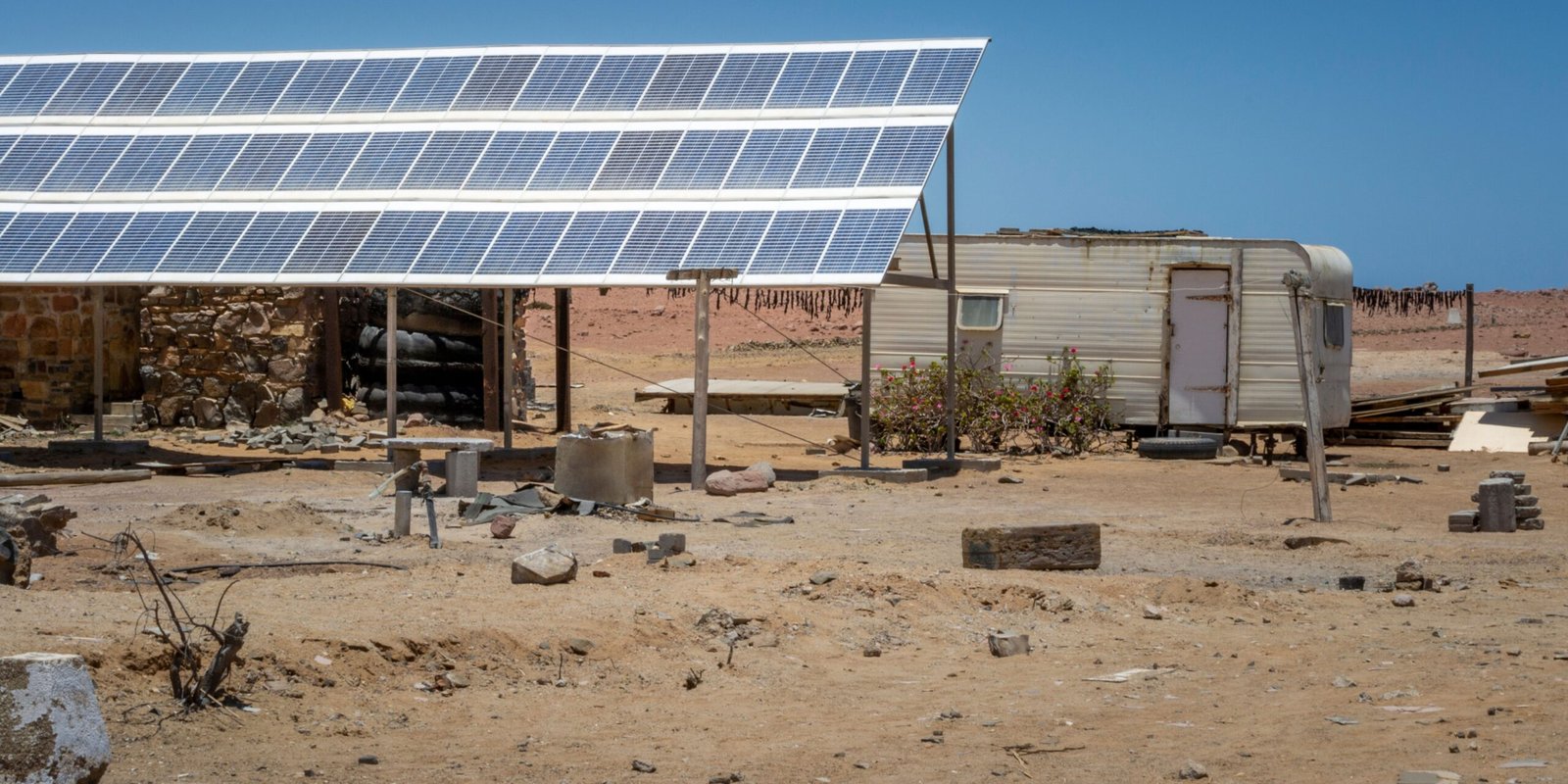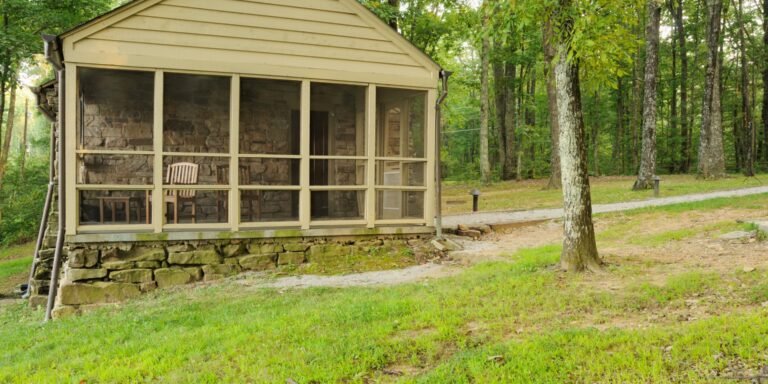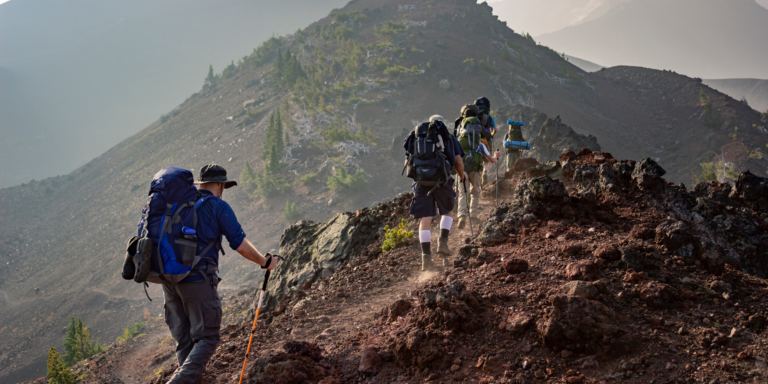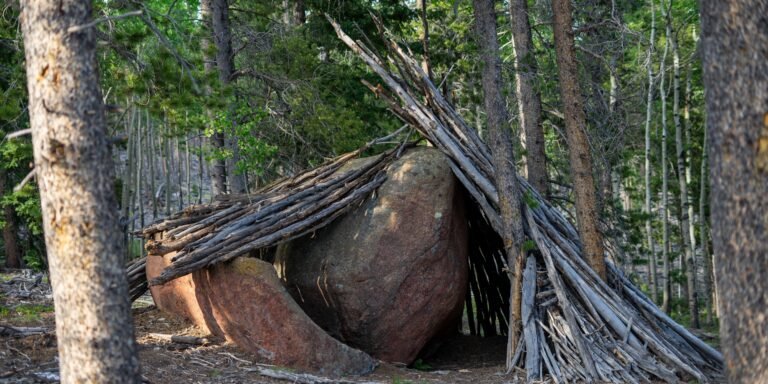Want To Live Off Grid? You Need this Checklist
This post may contain affiliate links, full disclosure here.
Living off the grid to reconnect with nature and escape the city’s daily grind is a romantic notion. However, it is not something you should do hastily. First, make a concrete plan and complete everything on the “off-grid living” checklist.
A systematic plan is essential for preparing to live off the grid. Examine your finances, skills, and potential relocation locations. Plan your house and ensure a sufficient and sustainable source of food, water, and energy.
This article will walk you through the process of preparing to live off the grid.
Living Off The Grid Checklist
There is no precise definition of living off the grid. It is also not governed by a rigid set of criteria. It is a way of life choice.
Living off the grid, in general, means being less reliant on commercial products and government-provided services. It is self-sufficiency and producing the majority of your own food, water, and electricity.
To some, it may also imply getting away from the city, living in the countryside, reducing resource consumption, and participating in environmental preservation.
How To Begin Your Living Off The Grid Journey
The idea of living off the grid may be intimidating at first. There are numerous factors to consider and plan for. However, with a well-planned and comprehensive approach, you can become well-equipped to begin living a more self-sufficient lifestyle off the grid.
Prepare Financially
Pay Off Debts
Pay off all your debts first before proceeding with your plan to go off the grid. These include any student loans, credit cards, or other debts you may have. You don’t want to forget about these and then find out that interest has caused them to grow exponentially.
Finance and Expense Sources
Examine your monthly income and expenditures. It will assist you in keeping track of the money that comes and goes. This will allow you to accurately determine how much you spend on specific items such as food, transportation, housing, utilities, and leisure.
Listing your sources of income will also assist you in determining your financial stability. If you are a middle-income earner, you may want to invest a portion of your monthly salary to boost your savings.
Save Money
The average out-of-the-grid start-up cost is $100,000. It includes the costs of purchasing land, constructing a house, and purchasing all appliances and other necessary items. It may be more expensive depending on a number of factors, including the location of the land and the size of the house.
With that in mind, you should begin saving. Set a budget and a goal for yourself. Make a list of your monthly expenses and eliminate those that are unnecessary.
For example, instead of eating out every day, you should prepare your own meals. It is less expensive and even healthier to do so.
Avoid overspending on leisure activities and instead focus on simple pleasures like reading books or watching Netflix at home instead of going to the movies. Downsizing your lifestyle will not only save you money, but it will also prepare you to live a simpler, off-grid life.
Set a monthly savings goal for yourself. Limit yourself, for example, to spending only a portion of your monthly salary. Consider other possible sources of funding. You can increase your income by investing your savings in a reputable platform.
Learn Skills
Cooking Abilities
If you intend to live off-grid, you must be able to cook your own food because food establishments will become less accessible and convenience stores will no longer be one block away.
You can begin slowly and learn the fundamentals first. Watch tutorials and try to recreate simple recipes from cookbooks. The most important thing is to keep going and practice whenever you can. You’ll become an expert at it over time.
Also, keep in mind that your equipment and ingredients will be limited. As a result, you must understand how to make the most of what you have. Create dishes and deviate from traditional cooking methods as needed.
Food Preserving
Cooking is one skill you must learn, but so is food preservation. There will be times when your food supply is in short supply. Fruit and vegetables, for example, will be difficult to grow during the winter. Hunting for rabbits or butchering a cow will be difficult, if not impossible.
As a result, you must understand how to preserve food for later consumption. Canning, pickling and dehydrating are all methods for preserving fruits and vegetables. Meat can also be kept fresh by drying or dehydrating it, smoking it, or canning it.
Salt is a fantastic food preservative. It can be added to meat products before further processing to extend their shelf life.
Carpentry Skills
Some of your possessions will wear out or break down over time, so you must learn how to repair and maintain them. Understand the fundamentals of carpentry and how to use common tools. It is a skill that will help you live more sustainably off the grid.
Learn how to cut a tree, erect a fence, build furniture, and construct a barn. Understand basic plumbing skills such as unclogging a toilet or drain and repairing a faucet or a broken water line. If you don’t know how to do these, you can always consult a book or conduct a quick internet search.
First Aid Knowledge
Living off-grid also means that medical facilities are more difficult to reach. As a result, in order to save yourself or someone else, you must learn how to administer first aid. To begin, you must learn the fundamentals of wound sterilization, bandaging, and stitching.
To avoid further complications, you must also understand how to stabilize injured body parts. The Heimlich maneuver for choking incidents and cardiopulmonary resuscitation are two other useful first aid skills to learn (CPR).
You can improve your first aid skills by attending seminars and training sessions. The majority of them are inexpensive, and some are even free.
Farming and Gardening
To make your off-grid lifestyle sustainable, you must become self-sufficient, particularly in terms of food. Gardening and raising livestock will ensure your food security. It will also provide you with a guaranteed supply of fresh and organic food.
Location
Determine your preferred off-the-grid lifestyle
Living off the grid is not a binary choice. It does not automatically imply severing all ties or living alone in the wilderness (although you may also choose to do this). Most of the time, it simply means reducing your active city lifestyle, living a simpler life in the countryside, and becoming more self-sufficient.
As a result, you should decide what kind of off-grid living you want. This choice will have an impact on the best location for you to build your new home.
If you only want to live partially off the grid, choose a location where you can still access government-provided utilities such as water, plumbing, and electricity.
You can also choose to live a “modern off-grid” lifestyle, which is currently the most popular. This type still allows you to enjoy modern conveniences such as technology and the internet, but you are self-sufficient in terms of water and electricity. When compared to the partial off-grid type of living, an ideal location for this type is relatively farther from urban areas.
Finally, for the most extreme form of off-grid living, you should choose an isolated location. Your home is essentially a wilderness cabin that is completely disconnected from modern life. It is the cheapest type, but it is also the most difficult to live in.
Understand the existing laws governing off-grid living
When deciding where to begin your new life, you should also consider the existing laws. Some states are more strict about off-grid living, while others are more lenient and legally allow it.
Alabama, Missouri, Georgia, Tennessee, and Texas are the top five states in the United States that allow off-grid living.
Consider your financial situation.
There are numerous factors that influence the cost of land. One of them is the state in which the property is located. Land in Maine or Texas, for example, is less expensive than land in Pennsylvania or California. The USDA National Agricultural Statistics Service provides a comprehensive summary of land values in each state (NASS).
Prioritize looking into less expensive lands, but also consider your options’ surroundings. Natural resources are essential for off-grid living, so make certain that resources, particularly water, are easily accessible in the land you intend to purchase.
You should also consider the land’s quality. Because you will be living off the grid, you will need to become self-sufficient in terms of food. Find out what kind of soil is present in the area you want to buy in and whether it is suitable for farming.
You’ll be able to estimate how much money you’ll need to cultivate the soil if you know what type it is. If it’s too expensive, look into other options with better soil quality.
Secure Water Sources
Water Supplies
Water is necessary for survival. It is also required for other daily activities such as bathing, brushing, washing, and sanitary needs. As a result, the first thing you should think about is finding a good source of it.
Rivers and rainwater are the most common natural water sources. You may also want to install a well to supplement them. You should also figure out how much water your family uses. It will assist you in determining the appropriate amount of water to keep on hand in case of an emergency.
You should purchase two sets of large capacity tanks to store your water supply. One set is for general use, such as doing laundry or flushing the toilet.
This way, you’ll always have enough drinking water.
Before consuming or cooking with water, make sure to purify it first. You can do so by mixing it with chlorine or bleach. Boiling the water can also remove harmful bacteria. Simply boil the water, allow it to cool, and then pour it into a gallon or jug.
System of Water Transport
The next step is to construct an efficient piping system that will allow you to transport water from the storage tanks to various parts of your house.
Pumps are used in modern piping systems to transport water where it is needed. This system, however, is powered by electricity. The elevation-based system is a less energy-intensive system that is better suited for off-grid living. It works by utilizing gravity to induce water flow. This system requires you to place your water tanks on an elevated surface that is at least as high as all of your house’s water outlets.
Develop a Sanitation Plan
Septic System
You must have a large enough and well-built septic tank to handle the human solid and liquid waste. For a family of four, the standard size is 1,000 gallons, with an additional 50 gallons for each additional person in the household.
Make sure the septic tank is properly sealed to prevent insects from living in it. Additionally, install a vent in the tank’s cover and connect it to an elevated tube. It will keep pressure from building up inside the tank as a result of the waste gases. The elevation of the exhaust tube’s end is also important for preventing the odor from spreading throughout your home.
Garbage Collection and Disposal
Make a plan for how you will dispose of your trash. Use proper waste segregation to make waste management easier. For biodegradable waste, you can dig a compost pit. You can bring your plastic and non-biodegradable trash to a nearby garbage facility. If it is only a small amount, you can also burn it.
Build a Sturdy Shelter
Obtain Required Permits
Before you begin construction on the land you purchased, make sure you have all of the necessary permits. Secure the necessary documents for legally building a house. The list of requirements varies by state, so check with your local government office for more information.
Material Costs
Aside from the land, the actual construction of your home will consume a significant portion of your budget. If you have a limited budget, make sure to design your home with only the necessary number of rooms and important common areas.
Don’t try to make your home overly large and spacious. Determine its size in relation to your budget, and prioritize purchasing essential items for it.
Constructing Your Home
You can hire a professional to build your house or do it yourself. If you are physically fit and have sufficient knowledge of house construction, choose the latter option. Otherwise, go with the first option.
To build and design your home, seek the advice and assistance of professionals. It may be more expensive, but it ensures the quality of the house you will have.
By assisting in the construction process, you can reduce construction costs. For example, instead of hiring four people for the job, you could hire three and collaborate with them. Other capable family members can also replace a worker or two to further reduce labor costs.
If you don’t have the budget or time for the above-mentioned option, you can simply build your own home. They are less expensive to build and require less planning, but they are not as strong or as beautiful as personalized home designs.
Gardening
Growing your own garden will assist you in becoming more self-sufficient in terms of food. It can provide you with fresh fruits and vegetables to supplement your current supplies.
Garden Area
To maximize productivity, your garden should be located in an ideal location. It must receive adequate sunlight and be located near a water supply. Plants require sunlight to grow, so avoid placing it in shady areas. Furthermore, a location far from a water source is not ideal because it will necessitate extra effort to transport the water. To solve water transport issues, you can build an irrigation system.
Before you begin planting, you should first prepare the soil. Till and cultivate the land to soften it and make it more suitable for planting. Then, add compost and fertilizer to enrich the soil and provide it with the nutrients it needs for plant growth.
Plants that are suitable
The type of weather in your area is one of the most important factors to consider when starting a garden. Determine the annual weather pattern in your area, and then research the plants that can be grown there.
Determine which plants are appropriate for each season. During the winter, for example, you can grow carrots, beets, and cabbages. During the summer, you can grow potatoes, squash, green beans, and an assortment of other vegetables.
Examine your gardening abilities as well. If you’re just starting out, stick to plants that are simple to grow, such as radish, peas, and carrots. To improve, conduct research, and read books. As your gardening skills improve, you can try growing plants that require more skill.
Grow Livestock Animals
You’ll also need vitamins and minerals from animal products to create a complete nutrient profile. You can try raising the following livestock animals, depending on your resources and skills:
Chickens
Chickens are relatively simple to raise. They require less upkeep and require less capital to purchase than other livestock animals. They lay eggs and produce meat, and they eat bugs and kitchen scraps.
Pigs
Pigs require more food and are more expensive to raise than chickens. They require a lot of upkeep, and their living quarters must be cleaned on a regular basis. They make meat and eat kitchen scraps.
Goats
Goats are very simple to raise. They don’t require much attention or maintenance; all you have to do is feed and water them. They eat grass and produce meat and milk.
Cows
Cows are the most expensive livestock to purchase, but they also produce the most meat. They, like goats, are low-maintenance. They eat grass and produce meat and milk.
Harvesting
Aside from raising livestock, you should also consider how you will harvest their meat. Determine whether you have the necessary skills. If you don’t, decide whether you’ll hire a butcher to come to your house or take your animals to a slaughterhouse.
Make a harvest plan ahead of time. Harvest before the winter season if possible to ensure the availability of transportation and the services of a butcher or slaughterhouse.
Think About Energy
Sources of Energy
The cost of purchasing and installing an energy system is not cheap. However, having your own energy source will help you save money in the long run if you live off-grid. You have a few options to choose from, so it is critical that you select the best one for your situation.
Consider hydroelectric power if there is a nearby river or flowing water on a slope.
Wind energy, on the other hand, should be considered if your area experiences consistent strong winds. Another option is solar energy, which is appropriate if your area receives a moderate to an abundant amount of sunlight all year.
Create a Safety and Security Plan
Self-Defense and Protection
In terms of security, living off the grid has both advantages and disadvantages. Because your home will be far from urban areas, fewer people will be roaming nearby, and the chances of a perpetrator attacking your home will be lower.
At the same time, having fewer neighbors means that fewer people will hear your call for help if an intruder breaks into your home. As a result, you must learn how to defend yourself in such situations.
Learn the fundamentals of hand-to-hand combat and legally obtain a firearm. When keeping and using your gun, remember to be a responsible gun owner.
Participate in seminars and training sessions on safe shooting, gun storage, and gun maintenance.
Surveillance
Install surveillance cameras around your home to keep an eye on anyone who wanders around at night. Having this information will allow you to anticipate an intruder attack and give you enough time to beef up your security.
You can also get a guard dog who will bark and alert you immediately if anyone suspicious approaches your home.
Sustainability
Off the grid, sustainability is the key to a better and more stable life. As a result, once you’ve completed everything on the checklist above, your next goal should be to improve. You should strive to improve the sustainability of your off-grid lifestyle by upgrading your home, energy systems, food sources, water system, and skills.
Checklist for Off-Grid Living
Living off the grid is a more tranquil way of life than living in a big city. It is rewarding and wonderful, especially if you are well prepared. There are no hard and fast rules to follow when preparing, but the steps outlined in this article will provide you with all of the necessary information. Move at your own pace and devise a strategy that is appropriate for your resources. Cross off the items on this checklist one by one. You’ll eventually be able to live off the grid, more independently and closer to nature.








